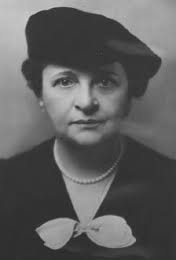Aesthetic
Realism seminar:
The Fight
between Boredom
and Awareness
in a Woman's Mind, part
2
At
Florida State University, though I’d hoped
through English literature
and history to have a wider interest in
things, I began to find it difficult
to concentrate—everything seemed a wash.
At night I often hung out
with friends at the college pub; I felt
livelier after I had a few drinks.
Other times I would listen to my Elton John
records alone in the dorm.
I
looked to meet a man who would save me from a
world I felt was cold and
dreary. I liked dating Tom, whose eyes
lit up whenever he saw me.
Now I felt tinglingly aware! But who he
was, and what he was hoping
for, I was little interested in. And as
I was seeing Tom, I was also
writing letters to another man stationed
overseas, thinking the more men
who were interested in me, the better I'd
feel. But I didn't feel
better, I felt ashamed, and stopped seeing Tom
after a few months. I was
22, and already felt weary about the future.
Several
months after this, a great thing happened: I
began to have Aesthetic
Realism consultations! "How tired are
you of life?" my consultants
asked me. How did they know? I wondered,
but I languidly answered
"Ah, not too terribly tired."
Consultants:
Do you feel the world is interesting
or dull? I hadn’t seen it as
interesting, but I felt honestly hopeful
that I was going to learn how. Then they
asked: "Are you going
to like the world because you have a lot of
men interested in you…or because
you see it in a way that is honest, beautiful,
and just?"
As
my consultants talked about the meaning of
this principle of Aesthetic
Realism “The world, art, and self explain each
other: each is the aesthetic
oneness of opposites,” I began to see things
differently. One question
they asked was "Are you, like this table, both
surface and depth?"
This was the beginning to seeing many things
with greater dimension.
After this consultation, I had a fresh
awareness of the world around me.
Walking down the street, I felt something new:
I was related to things—to
a maple tree I saw--it was one tree with many
leaves as I was one person
with many thoughts. And as I passed a
woman, I felt a kinship: she
had a surface, and also feelings beneath, as I
did.
2.
Awareness in an important Woman of the
20th Century
Frances Perkins, whom
my colleague Irene Reiss
spoke about in a seminar here some years ago,
is a person I admire for
her passionate,
scientific work to have social
and economic justice come to the American
people.  A
former secretary of labor said of her: "Every
man and woman who works at
a living wage, under safe conditions, for
reasonable hours, or who is protected
by unemployment insurance or social security,
is her debtor." A
former secretary of labor said of her: "Every
man and woman who works at
a living wage, under safe conditions, for
reasonable hours, or who is protected
by unemployment insurance or social security,
is her debtor."
Frances
Perkins was born in Boston in 1880. Her
parents were well
off, described by Bill Severn in his biography
as "strict conservative
pillars of the Congregational Church," who
"protected [their daughter]
from the harsher realities of life. She was
shielded from those who lived
in less fortunate homes, cautioned not to
speak to strangers."
She
was encouraged to feel she was better than
some people and should keep
her distance. This, however, made her
fearful. She recalled
that she was exceedingly shy, so much so that
she hesitated to walk "into
the public library to ask for a book or to go
into a store to buy a spool
of thread."
When she began school
and became aware that one of her best friends
came from an impoverished
home, she was troubled, and anxiously asked
her parents questions.
"In Frances Perkins family's opinion," Severn
writes,
alcohol
was the primary evil that
dragged…people down into poverty, along with
shiftlessness….Her father
[told] her [she] shouldn't concern herself
with such things, when she asked
"But why are so many nice people poor?"
She would come to have a
vivid awareness of "such
things"; they would concern her life most.
While
attending college at Mount Holyoke, one of her
professors encouraged
her to major in chemistry. Unlike me,
she felt the stimulus of the
course “opened her mind and gave her a
scientific approach to other things."
For a course she took on industrial growth in
America, she visited factories
and described the shocking conditions of
working people.
"I was
horrified at the work that
many women and children had to do in
factories…."There were absolutely
no effective laws that regulated the number
of hours they were permitted
to work. There were no provisions which
guarded their health nor…compensation
in case of injury. Those things seemed
very wrong."
She was becoming keener
and keener--using scientific
observation to come to logical
conclusions. Biographer George Martin
wrote:
She
discovered that one serious accident—say,
the loss of a man’s hand—could drive a
steady, sober working family into
penury…. Avoiding poverty therefore was not
a question simply of liquor
or laziness but also of safety devices on
machines…."
When, in her senior year
she heard a speech by
the important reformer Florence Kelley on the
horrors of child labor and
sweatshops, Ms. Perkins
knew with certainty
social justice would be her vocation.
continue
to page 3
|